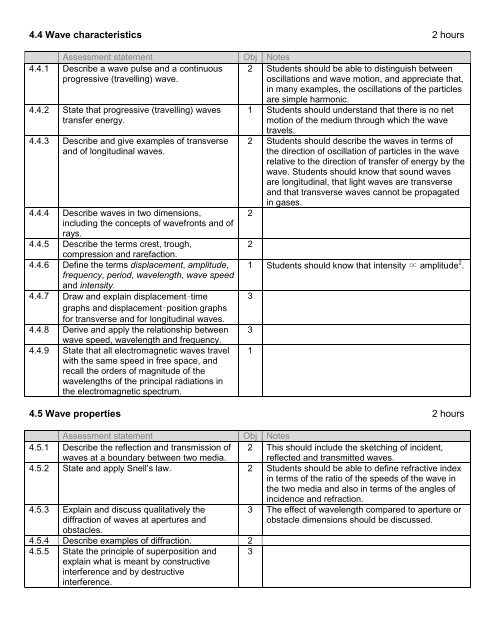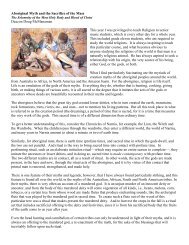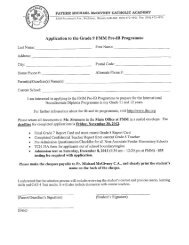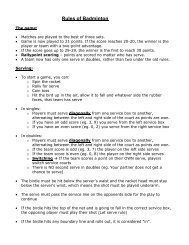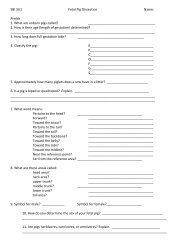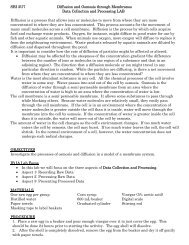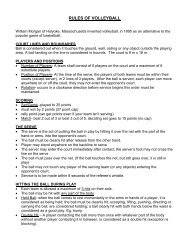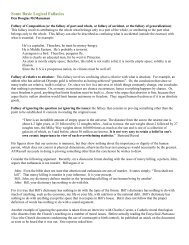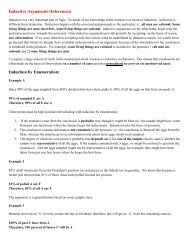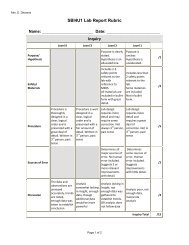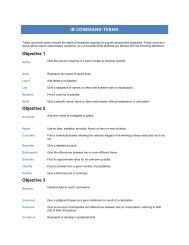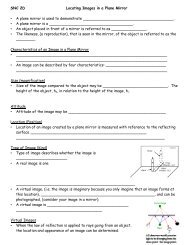Syllabus - Father Michael McGivney Catholic Academy
Syllabus - Father Michael McGivney Catholic Academy
Syllabus - Father Michael McGivney Catholic Academy
- No tags were found...
Create successful ePaper yourself
Turn your PDF publications into a flip-book with our unique Google optimized e-Paper software.
4.4 Wave characteristics 2 hoursAssessment statement Obj Notes4.4.1 Describe a wave pulse and a continuousprogressive (travelling) wave.2 Students should be able to distinguish betweenoscillations and wave motion, and appreciate that,in many examples, the oscillations of the particles4.4.2 State that progressive (travelling) wavestransfer energy.4.4.3 Describe and give examples of transverseand of longitudinal waves.4.4.4 Describe waves in two dimensions,including the concepts of wavefronts and ofrays.4.4.5 Describe the terms crest, trough,compression and rarefaction.4.4.6 Define the terms displacement, amplitude,frequency, period, wavelength, wave speedand intensity.4.4.7 Draw and explain displacement–timegraphs and displacement–position graphsfor transverse and for longitudinal waves.4.4.8 Derive and apply the relationship betweenwave speed, wavelength and frequency.4.4.9 State that all electromagnetic waves travelwith the same speed in free space, andrecall the orders of magnitude of thewavelengths of the principal radiations inthe electromagnetic spectrum.are simple harmonic.1 Students should understand that there is no netmotion of the medium through which the wavetravels.2 Students should describe the waves in terms ofthe direction of oscillation of particles in the waverelative to the direction of transfer of energy by thewave. Students should know that sound wavesare longitudinal, that light waves are transverseand that transverse waves cannot be propagatedin gases.221 Students should know that intensity ∝ amplitude 2 .4.5 Wave properties 2 hoursAssessment statement Obj Notes4.5.1 Describe the reflection and transmission ofwaves at a boundary between two media.2 This should include the sketching of incident,reflected and transmitted waves.4.5.2 State and apply Snell’s law. 2 Students should be able to define refractive indexin terms of the ratio of the speeds of the wave inthe two media and also in terms of the angles ofincidence and refraction.4.5.3 Explain and discuss qualitatively thediffraction of waves at apertures andobstacles.4.5.4 Describe examples of diffraction. 24.5.5 State the principle of superposition andexplain what is meant by constructiveinterference and by destructiveinterference.33313 The effect of wavelength compared to aperture orobstacle dimensions should be discussed.


